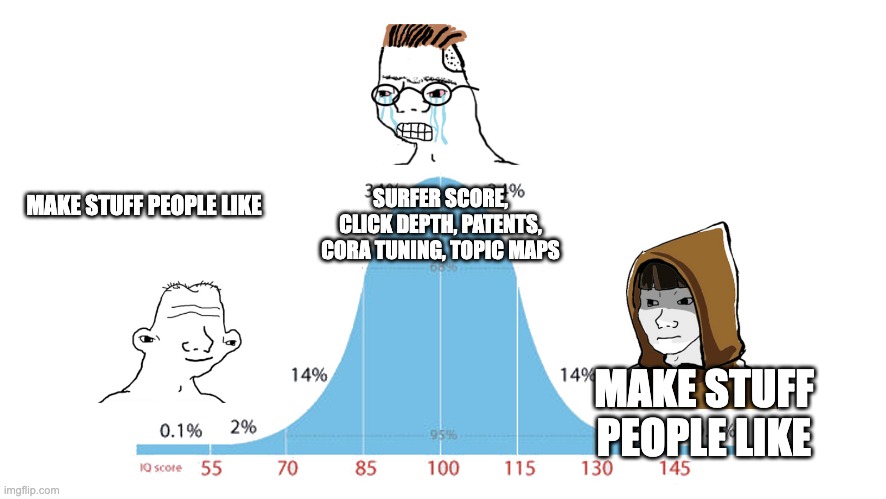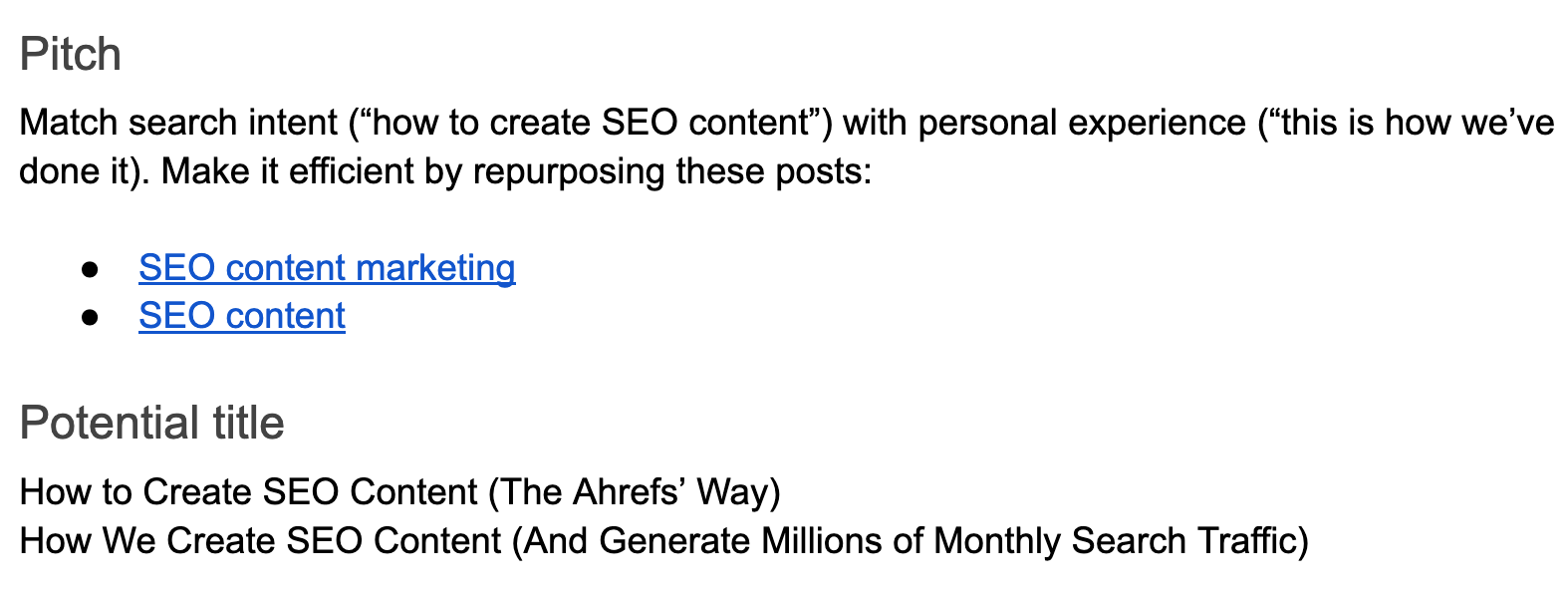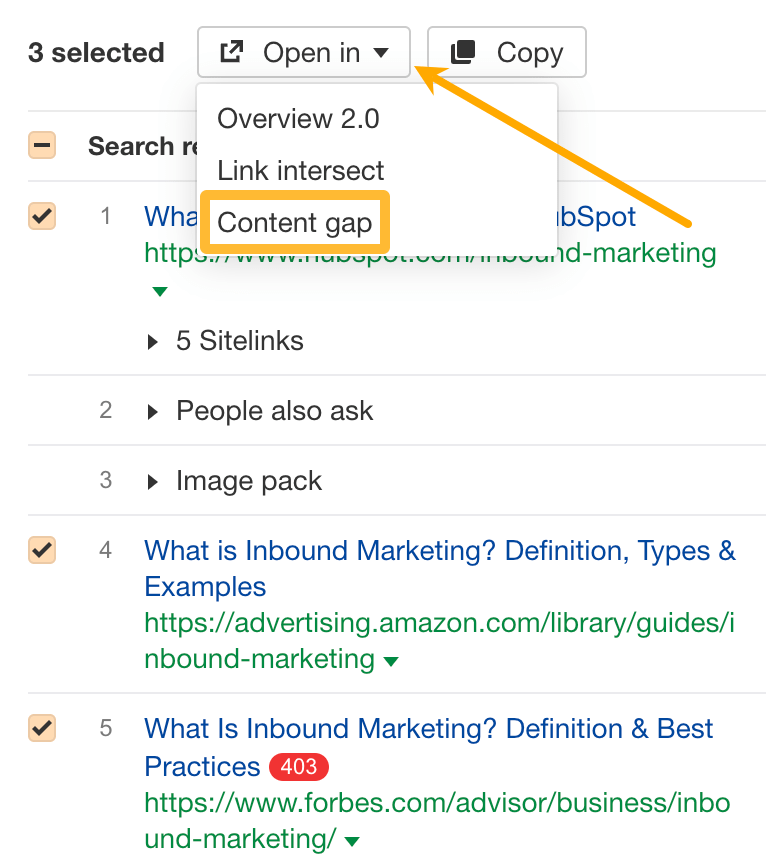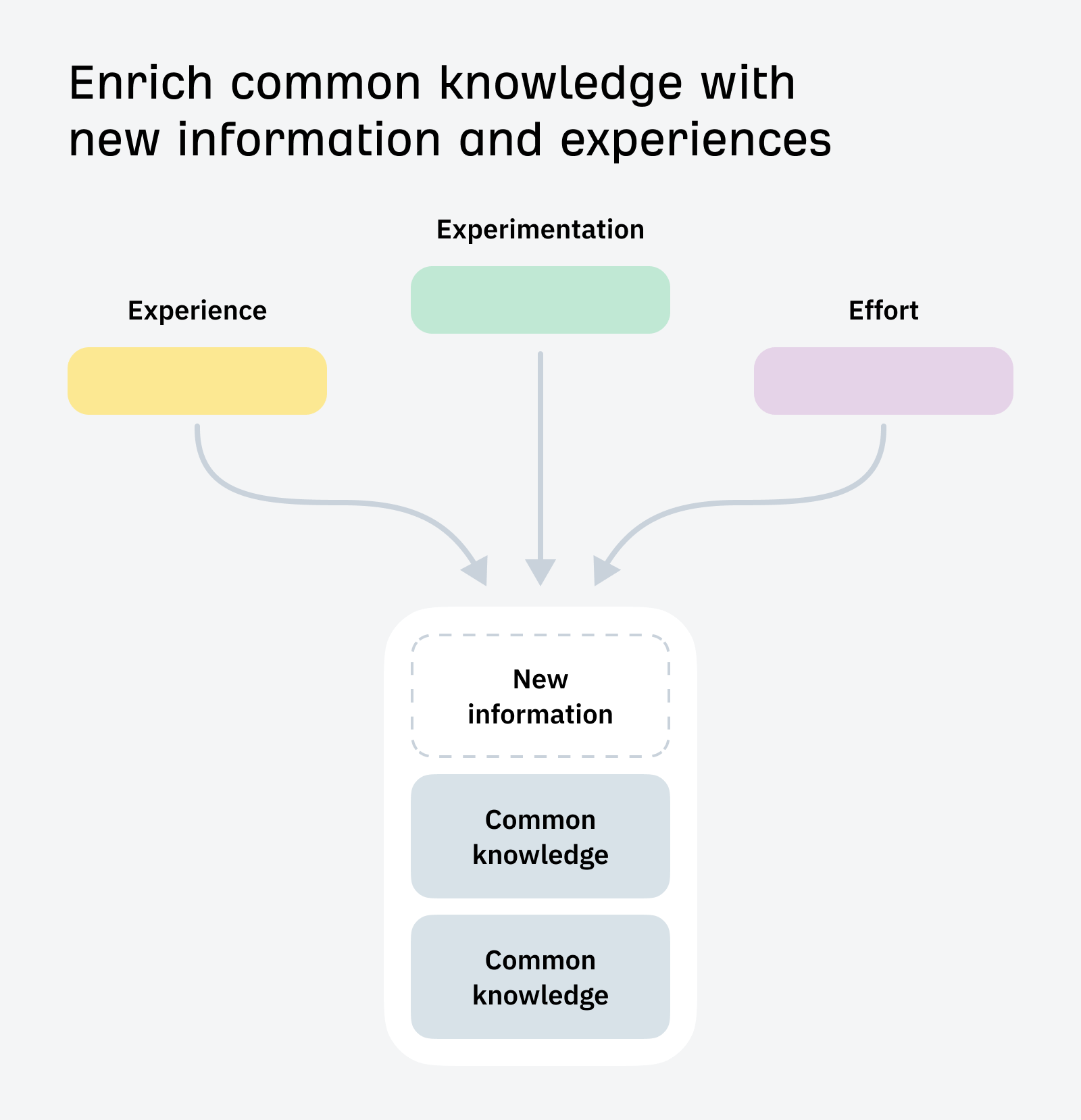SEO
How I Rank #1 on Google

SEO content is content optimized to rank high on search engines.
I’ve created plenty of them in my career. In fact, I’ve written 111 articles for this blog, of which ~80%—90% are SEO content.
Altogether, they receive an estimated 121,000 monthly search visits from Google.


Suffice it to say, I know a little something about writing SEO content. Follow along as I show you how I put together this article on how to create SEO content (meta, I know).
If we want to acquire search traffic, we need to target topics that people are searching for on Google. In this case, I’m targeting the keyword “seo content creation”.
How do I know people are searching for this keyword? Well, according to Ahrefs’ Keywords Explorer, this keyword has a search volume of 500 and a traffic potential of 1,100.


A search volume of 500 means on average, there are 500 searches per month for this keyword on Google. And a Traffic Potential (TP) of 1,100 means I could potentially acquire 1,100 monthly search traffic from targeting this keyword, if I manage to rank #1 on Google.
Sidenote.
Why the discrepancy? That’s because there are many ways to search for the same thing. Google understands that and ranks nearly the same pages for all variations. Therefore, your page could potentially rank for these different keywords and generate search traffic from all of them.
How did I find this keyword? I found it by analyzing what our competitors were ranking for. After all, if they rank for it, it’s likely relevant to us and something we can potentially rank for too.
To find what our competitors rank for, I entered our competitor’s website into Ahrefs’ Site Explorer and went to the Top pages report.


This report shows which pages on our competitor’s website get the most organic search traffic. For example, SEMRush’s page on competitive analysis ranks for ~3,000 keywords and gets an estimated total of 24,000 monthly search visits. The #1 keyword sending them the most search traffic is “analyse competitors”, which they rank for in position one.
I went through the report and that’s where I found this keyword:
We want to rank high on Google, but we don’t want to do that for any random topic. We want to make sure we only target topics that can generate us sales eventually.
We do this by assigning a business potential score to every relevant topic we find. The business potential score is simply how easy it will be to pitch your product while covering a certain topic.


We want to prioritize topics that score at least a “2” and above.
In this case, I scored “seo content creation” a “2”—Our product isn’t essential, but boy is it a yuge timesaver.
To know what type of content I need to create, I need to figure out why searchers are searching for “seo content creation”. This is known as matching search intent.
Since Google’s aim is to rank relevant content, I can look at the SERPs to figure search intent. I did this by entering “seo content creation” into Keywords Explorer, scrolling down to SERP Overview, and clicking Identify intents.


I see that searchers want a step-by-step guide on how to create SEO content. And I also see that the main audience for this topic are beginners.
With the outline approved, it’s time to move on to the next step. This depends on what you’ve pitched.
For example, the unique angle for my post on the best marketing books was to get recommendations from other marketers. So, rather than dive right into drafting, bulk of the work involved reaching out to people on LinkedIn or email.


For this post, I’m writing from my lived experience, so it was more of a key-bashing-and-backspacing-session on Google Docs. (You can’t see it, but I backspaced a lot.)
Unfortunately, I’m no Anthony Trollope and don’t have a fixed routine for you to copy.


My one non-negotiable is a cup of coffee. I’m sure most people who write will agree with me. Otherwise, I’m all over the place. If I feel like Charles Darwin, I’ll set a 30-minute timer and start writing. Or I’ll go for a walk.


Sorry to disappoint you, but neither ChatGPT, Claude, Gemini, or Llama feature here. Call me trad, but I still prefer to write, not generate content. Writing is thinking, after all. I often surprise myself by discovering things I never knew simply by writing.
Beyond the productivity advice, the things I try to do in my drafts (after getting whipped into shape by Ahrefs over the past five years) are:
- Ensuring I’m including use cases of Ahrefs naturally within the narrative (this post is an example of how I’m doing this.)
- Making sure every statement is as accurate as possible. No hype, no lying, qualifiers like “could”, “perhaps”, or “may” widely accepted.
- Be clear. No fluff, and only use jargon when needed. Include images where possible.
Once I’m sufficiently satisfied with the draft, I tag Ryan on Basecamp (where we track the progress of drafts) for his feedback. Here’s his feedback for this post:


Since there are no major changes, it’s ready to be uploaded and published (after making the edits.)
Hol’ up, not so fast. Before we actually publish, I need to make sure the on-page SEO for this post is done. Matching search intent is 80% of the way, but there’s no harm in ensuring that Google clearly understands what your page is about.
Think of it like the icing on a cake. The cake is already edible, but the icing just makes it better and prettier.
On-page SEO is really a simple checklist, like:
- Including the target keyword in the title, URL, H1, and the intro paragraph.
- Writing an engaging meta description.
- Linking to other useful pages on our website.
- Adding alt text to all our images.
In my opinion, getting the title right is the most important. Beyond the SEO benefits, it’s the first thing any human sees. So it must do the job to convince them to click.


I follow Ryan’s advice when it comes to titles.
how to write endless titles for your blog post
titles don’t come naturally to me, so i’ve been working hard to write more – and better – titles for my articles
here’s my process, illustrated by this week’s @AnimalzCo article: pic.twitter.com/gIQDNmPQt2
— Ryan Law (@thinking_slow) January 26, 2022
I try to brainstorm at least ten titles in varying styles for every blog post I write. This takes up a lot of brain juice, so this is also where I introduce my best friend, ChatGPT:


I eventually stuck with my original title, but it’s a good exercise to get your ideas going.
Final thoughts
You might have been expecting some secret SEO tricks I use to rank, but unfortunately, there’s none of that. It’s really just a simple process of keyword research, matching search intent, making something unique, and adding that final touch of on-page SEO.
As this meme explains:


My process isn’t fancy, but it works.


























